Category: Recommended Reading
The ‘Sad, Happy Life’ of Carson McCullers
Dwight Garner at the NYT:
 “Carson McCullers: A Life” is a necessary book, though. It builds on Carr’s work and considers newly released material, including letters and journals and, most tantalizingly, transcripts of McCullers’s late-life psychiatric sessions with the female doctor who would become her lover and gatekeeper. It has been seven years since McCullers (1917-67) had her centennial, when the Library of America released her complete works in two volumes. That was an occasion, which many critics took, to revisit her work, which includes the novels “The Heart Is a Lonely Hunter” (1940) and “The Member of the Wedding” (1946), and the story collection “The Ballad of the Sad Café” (1951).
“Carson McCullers: A Life” is a necessary book, though. It builds on Carr’s work and considers newly released material, including letters and journals and, most tantalizingly, transcripts of McCullers’s late-life psychiatric sessions with the female doctor who would become her lover and gatekeeper. It has been seven years since McCullers (1917-67) had her centennial, when the Library of America released her complete works in two volumes. That was an occasion, which many critics took, to revisit her work, which includes the novels “The Heart Is a Lonely Hunter” (1940) and “The Member of the Wedding” (1946), and the story collection “The Ballad of the Sad Café” (1951).
Special notice was paid, and justly so, to McCullers’s gifts for portraying loners and misfits, for addressing taboo topics such as mental illness and alcoholism and same-sex relationships. As Joyce Carol Oates put it in The New York Review of Books, “McCullers seemed to have identified with whatever is trans- in the human psyche, seeing it as the very fuel of desire.”
more here.
This is why blackface is offensive
Harmeet Kaur in CNN:
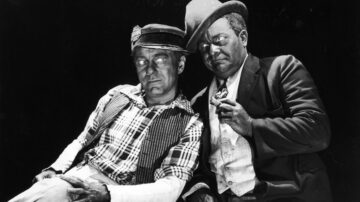 Blackface isn’t just about painting one’s skin darker or putting on a costume. It invokes a racist and painful history. The origins of blackface date back to the minstrel shows of mid-19th century. White performers darkened their skin with polish and cork, put on tattered clothing and exaggerated their features to look stereotypically “black.” The first minstrel shows mimicked enslaved Africans on Southern plantations, depicting black people as lazy, ignorant, cowardly or hypersexual, according to the Smithsonian’s National Museum of African American History and Culture (NMAAHC). The performances were intended to be funny to white audiences. But to the black community, they were demeaning and hurtful.
Blackface isn’t just about painting one’s skin darker or putting on a costume. It invokes a racist and painful history. The origins of blackface date back to the minstrel shows of mid-19th century. White performers darkened their skin with polish and cork, put on tattered clothing and exaggerated their features to look stereotypically “black.” The first minstrel shows mimicked enslaved Africans on Southern plantations, depicting black people as lazy, ignorant, cowardly or hypersexual, according to the Smithsonian’s National Museum of African American History and Culture (NMAAHC). The performances were intended to be funny to white audiences. But to the black community, they were demeaning and hurtful.
One of the most popular blackface characters was “Jim Crow,” developed by performer and playwright Thomas Dartmouth Rice. As part of a traveling solo act, Rice wore a burnt-cork blackface mask and raggedy clothing, spoke in stereotypical black vernacular and performed a caricatured song and dance routine that he said he learned from a slave, according to the University of South Florida Library.
Though early minstrel shows started in New York, they quickly spread to audiences in both the North and South. By 1845, minstrel shows spawned their own industry, NMAAHC says. Its influence extended into the 20th century. Al Jolson performed in blackface in “The Jazz Singer,” a hit film in 1927, and American actors like Shirley Temple, Judy Garland and Mickey Rooney put on blackface in movies too. The characters were so pervasive that even some black performers put on blackface, historians say. It was the only way they could work – as white audiences weren’t interested in watching black actors do anything but act foolish on stage.
More here. (Note: In honor of Black History Month, at least one post will be devoted to its 2024 theme of “African Americans and the Arts” throughout the month of February)
The story behind Billie Holiday’s ‘Strange Fruit’
Liz Fields on PBS:
 The mesmerizing performance from Academy Award-nominated actress and singer Andra Day in “The United States Vs. Billie Holiday” has revived interest in the hauntingly beautiful and controversial song “Strange Fruit,” which Holiday first popularized in the late 1930s. The film details the numerous ways in which the US government terrorized the singer over her performances of the song right up until her untimely death in 1959, but it does not cover the unusual origins of the song, which was originally written as a poem by a Jewish American teacher from the Bronx, who was also a member of the Communist party.
The mesmerizing performance from Academy Award-nominated actress and singer Andra Day in “The United States Vs. Billie Holiday” has revived interest in the hauntingly beautiful and controversial song “Strange Fruit,” which Holiday first popularized in the late 1930s. The film details the numerous ways in which the US government terrorized the singer over her performances of the song right up until her untimely death in 1959, but it does not cover the unusual origins of the song, which was originally written as a poem by a Jewish American teacher from the Bronx, who was also a member of the Communist party.
Abel Meeropol, a son of Russian Jewish immigrants, taught English at Dewitt Clinton High School in the Bronx for 17 years before turning to music and motion pictures, writing under the pen name Lewis Allan. Meeropol was very disturbed by the persistence of systemic racism in America and was motivated to write the poem “Bitter Fruit” after seeing a photo depicting the lynching of two Black teens in Indiana in 1930. The poem was published in the journal The New York Teacher in 1937, and again later published in the Marxist journal, The New Masses, before Meeropol decided to turn the poem into lyrics and set it to music.
After that, Meeropol began to perform the song at several protest rallies and venues around the city along with his wife and African American singer Laura Duncan. The song first came to Holiday’s attention when she was working at New York’s first integrated nightclub, Café Society in Greenwich Village. Holiday was hesitant at first to sing it because she didn’t want to politicize her performances, and was (rightfully) concerned about being targeted at her performances. But the positive audience responses and frequent requests for “Strange Fruit” soon prompted Holiday to close out every performance with the song. Ahead of time, the waiters would stop serving so there was a deathly silence in the room, then a spotlight would shine on Holiday’s face and she would begin to sing:
“Southern trees bear a strange fruit/ Blood on the leaves and blood at the root/ Black bodies swingin’ in the Southern breeze/ Strange fruit hangin’ from the poplar trees…”
More here. (Note: In honor of Black History Month, at least one post will be devoted to its 2024 theme of “African Americans and the Arts” throughout the month of February)
Saturday Poem
Callibrations
A blue whale’s heart rate is calculated at 37 beats
per minute. Measurement is described as intense,
involving extensive coordination. Descent
into the ocean and the pressure a human body
is subjected to is an additional atmosphere, twice
as much as human lungs are used to. A man holds
his breath for eleven minutes. Depths complicate,
compress and shrink the air-containing spaces
in body and brain. Oxygen starvation feels like
euphoria, like experiencing something miraculous.
It takes two seconds to pump the 220 liters of blood
a blue whale circulates with every heartbeat. There
cannot possibly be a larger animal, the heart cannot
grow fast enough for a greater creature to survive.
A woman holds her breath for nine minutes.
The sensation of rising. Water, water, sunlight,
air. A pulse in the ears. The astonishing
violence as breath fills her lungs, her heart.
by Molly Fuller
from Able Muse
Friday, February 23, 2024
What physicists get wrong about consciousness
Philip Goff in IAI:
 Panpsychism is the view that consciousness is a fundamental and ubiquitous feature of the physical world. It is the view that the basic building blocks of the physical universe – perhaps fundamental particles – have incredibly simple forms of experience, and that the very sophisticated experience of the human or animal brain is rooted in, derived from, more rudimentary forms of experience at the level of basic physics. Panpsychism has received a lot of attention of late. The world of academic philosophy has been rocked by the conversion of one of the most influential materialists of the last thirty years, Michael Tye, to a form of panpsychism (panprotopsychism) in his latest book. And the main annual UK philosophy conference held a plenary panel on panpsychism this year for the first time in its history.
Panpsychism is the view that consciousness is a fundamental and ubiquitous feature of the physical world. It is the view that the basic building blocks of the physical universe – perhaps fundamental particles – have incredibly simple forms of experience, and that the very sophisticated experience of the human or animal brain is rooted in, derived from, more rudimentary forms of experience at the level of basic physics. Panpsychism has received a lot of attention of late. The world of academic philosophy has been rocked by the conversion of one of the most influential materialists of the last thirty years, Michael Tye, to a form of panpsychism (panprotopsychism) in his latest book. And the main annual UK philosophy conference held a plenary panel on panpsychism this year for the first time in its history.
Much of the attention has been critical, which is as it should be when it comes to matters on which there is little consensus. Among the recent critics are two leading theoretical physicists: Sabine Hossenfelder and Sean Carroll, who argue that panpsychism is incompatible with what fundamental physics tells us about the building blocks of the universe. However, these objections rely on a misunderstanding of what panpsychism is. Panpsychism is not a scientific theory in competition with physics, and therefore not incompatible with it. It’s rather a philosophical interpretation of the claims of physics.
More here.
Black Actors Who Redefined Excellence in Hollywood
Leah Jones in Yahoo News:
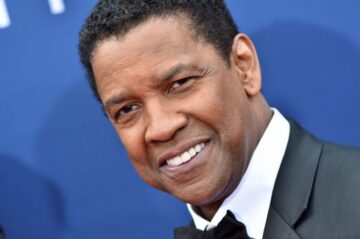 Throughout cinematic history, legendary Black actors have shattered barriers and pioneered new standards of excellence through their groundbreaking work on screen and off. Their compelling performances not only entertained audiences but also, reshaped the landscape of storytelling by destroying tired stereotypes and introducing more authentic narratives. These icons possess a rare, enduring star power that has resonated across generations. They continued to thrive not just through one great role, but through delivering consistently pioneering performances over decades. Their influence extends beyond Hollywood, as they open doors for future generations of young black actors and actresses through activism and advocacy. This list celebrates 18 of these transformative Black actors who redefined stardom by leaving an indelible mark on entertainment. They are ranked by the breadth of their impact both on screen through their iconic roles, as well as through enduring contributions to the industry. While each legendary figure stands alone in their artistry, together their collective work moves the needle on diversity and inclusion in monumental ways that continue inspiring today.
Throughout cinematic history, legendary Black actors have shattered barriers and pioneered new standards of excellence through their groundbreaking work on screen and off. Their compelling performances not only entertained audiences but also, reshaped the landscape of storytelling by destroying tired stereotypes and introducing more authentic narratives. These icons possess a rare, enduring star power that has resonated across generations. They continued to thrive not just through one great role, but through delivering consistently pioneering performances over decades. Their influence extends beyond Hollywood, as they open doors for future generations of young black actors and actresses through activism and advocacy. This list celebrates 18 of these transformative Black actors who redefined stardom by leaving an indelible mark on entertainment. They are ranked by the breadth of their impact both on screen through their iconic roles, as well as through enduring contributions to the industry. While each legendary figure stands alone in their artistry, together their collective work moves the needle on diversity and inclusion in monumental ways that continue inspiring today.
Denzel Washington
Denzel Washington has been regarded as a paragon of acting excellence throughout his decades-long career. He was born on December 28, 1954, in Mount Vernon, New York. Washington’s acting career began with his Broadway debut in A Soldier’s Play and a starring role in the popular television medical drama St. Elsewhere. His big-screen breakthrough came in the 1980s, marking the start of an illustrious journey in Hollywood.
More here. (Note: In honor of Black History Month, at least one post will be devoted to its 2024 theme of “African Americans and the Arts” throughout the month of February)
Friday Poem
Brown Circle
My mother wants to know
why, if I hate
family so much,
I went ahead and
had one. I don’t
answer my mother.
What I hated
was being a child,
having no choice about
what people I loved.
I don’t love my son
the way I meant to love him.
I thought I’d be
the lover of orchids who finds
red trillium growing
in the pine shade, and doesn’t
touch it, doesn’t need
to possess it. What I am
is the scientist,
who comes to that flower
with a magnifying glass
and doesn’t leave, though
the sun burns a brown
circle of grass around
the flower. Which is
more or less the way
my mother loved me.
I must learn
to forgive my mother,
now that I’m helpless
to spare my son.
by Louise Gluck
from New American Poets
David R. Godine, 1991
Faith In Art
Jonathan Anderson at Artforum:
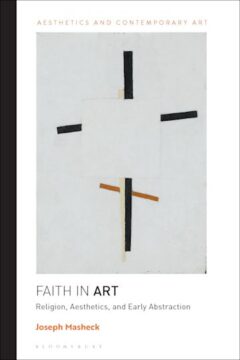 In the end, Faith in Art offers neither comprehensive views of these artists nor definitive conclusions about the religious bearings of their work. Nor is it concerned with establishing these artists’ faithful (or unfaithful) adherence to particular religious traditions—indeed, “none was religious in any conspicuous way.” Rather, Masheck seeks to show how “they believed that art had something formative to say about the possibility of a new, more humane society, by a faith ultimately based on scriptural, and sometimes surprisingly theological, intellectual formations.” This effectively pries open the critical histories of these artists, such that reducing these formations to either “materialism” or “spiritualism” becomes untenable.
In the end, Faith in Art offers neither comprehensive views of these artists nor definitive conclusions about the religious bearings of their work. Nor is it concerned with establishing these artists’ faithful (or unfaithful) adherence to particular religious traditions—indeed, “none was religious in any conspicuous way.” Rather, Masheck seeks to show how “they believed that art had something formative to say about the possibility of a new, more humane society, by a faith ultimately based on scriptural, and sometimes surprisingly theological, intellectual formations.” This effectively pries open the critical histories of these artists, such that reducing these formations to either “materialism” or “spiritualism” becomes untenable.
A thread running throughout Masheck’s chapters is his intuition of a deeply dialectical reasoning among these artists—one in which the overcoming or (sur)passing of religious positions results not in their elimination but in their incorporation into further syntheses. Competing Hegelianisms thus play throughout the book, as Masheck criticizes modernist historians for being “insufficiently dialectical about religion,” insofar as they presume religion to be irrelevant or “inadmissible” (à la Krauss’s “Grids”) rather than complexly sustained in larger dialectical patterns.
more here.
David Carrier & Joseph Masheck On Kirchner And Matisse
Wilderness Is Returning To Italy
John Last at The New Atlantis:
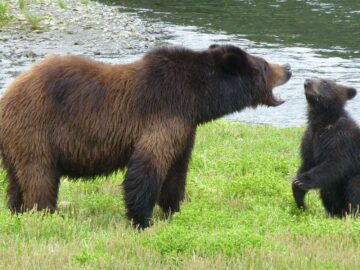
Brown bears once roamed widely across Western Europe. But already by the Middle Ages, hunting and habitat degradation had pushed their populations to the east and north. In the Alpine region of Italy, at times with the backing of the state, brown bears were hunted nearly to extinction — by the mid-1990s, just four were counted in the region around Trento, where Papi was killed.
For the past twenty-some years, however, an E.U.-funded program called Life Ursus has imported brown bears to Northern Italy to boost the region’s number of breeding pairs, taking candidates from its eastern neighbor Slovenia, where forests less pressed upon by human activity are still capable of sheltering a reasonably healthy bear population.
Though the program has undoubtedly succeeded in its aim — the brown bear population is now estimated at over 100 in the region — it has not been without controversy.
more here.
Winners of the Underwater Photographer of the Year 2024

More here.
Sean Carroll’s Mindscape Podcast: Christoph Adami on How Information Makes Sense of Biology
Sean Carroll in Preposterous Universe:
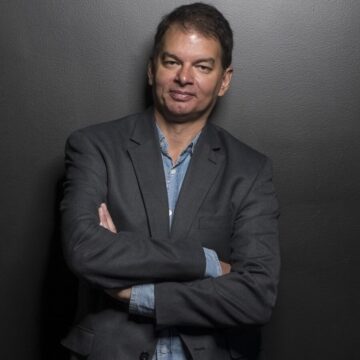 Evolution is sometimes described — not precisely, but with some justification — as being about the “survival of the fittest.” But that idea doesn’t work unless there is some way for one generation to pass down information about how best to survive. We now know that such information is passed down in a variety of ways: through our inherited genome, through epigenetic factors, and of course through cultural transmission. Chris Adami suggests that we update Dobzhansky’s maxim “Nothing in biology makes sense except in the light of evolution” to “… except in the light of information.” We talk about information theory as a subject in its own right, and how it helps us to understand organisms, evolution, and the origin of life.
Evolution is sometimes described — not precisely, but with some justification — as being about the “survival of the fittest.” But that idea doesn’t work unless there is some way for one generation to pass down information about how best to survive. We now know that such information is passed down in a variety of ways: through our inherited genome, through epigenetic factors, and of course through cultural transmission. Chris Adami suggests that we update Dobzhansky’s maxim “Nothing in biology makes sense except in the light of evolution” to “… except in the light of information.” We talk about information theory as a subject in its own right, and how it helps us to understand organisms, evolution, and the origin of life.
More here.
David Tennant’s Hilarious Opening Sketch at the BAFTA Film Awards 2024
Shockwaves in the Global Order
Helena Cobban in the Boston Review:
 Just days before October 7, President Joe Biden’s national security advisor, Jake Sullivan, was radiating confidence that Washington had effectively brought all of West Asia’s long-roiling conflicts under control. Washington could now, he believed, accelerate the pivot of attention, forces, and funding toward what had long topped Biden’s agenda: containing Chinese power in East Asia. Then came the Hamas-led attack on Israel and Israel’s onslaught on Gaza. By late January, Sullivan was flying to Bangkok to plead with top Chinese diplomat Wang Yi for help in defusing the sharp, Gaza-spurred conflict that had erupted in the globally vital waterway of the Red Sea. (Wang politely blew him off.)
Just days before October 7, President Joe Biden’s national security advisor, Jake Sullivan, was radiating confidence that Washington had effectively brought all of West Asia’s long-roiling conflicts under control. Washington could now, he believed, accelerate the pivot of attention, forces, and funding toward what had long topped Biden’s agenda: containing Chinese power in East Asia. Then came the Hamas-led attack on Israel and Israel’s onslaught on Gaza. By late January, Sullivan was flying to Bangkok to plead with top Chinese diplomat Wang Yi for help in defusing the sharp, Gaza-spurred conflict that had erupted in the globally vital waterway of the Red Sea. (Wang politely blew him off.)
Over the past four months, the United States has become increasingly isolated on the world stage.
More here.
Thursday, February 22, 2024
Lady Day of the Alhambra: Billie Holiday’s changeable shade
Ian Penman in Harper’s Magazine:
 Early on in Billie Holiday’s 1956 memoir Lady Sings the Blues, she recalls the picaresque world of New York nightlife in the Thirties:
Early on in Billie Holiday’s 1956 memoir Lady Sings the Blues, she recalls the picaresque world of New York nightlife in the Thirties:
Prohibition was on its last legs then. And so were the blind pigs, the cribs and clubs and after-hours joints that Prohibition set up in business. Some people thought it would go on like that forever. But you can call the roll of the wonderful joints that thrived before repeal in 1933—they’re mostly memories now: Basement Brownies, the Yea Man, the Alhambra, Mexico, the Next, the Clam House, the Shim Sham, the Covan, the Morocco, the Spider Web.
Get a load of those names! So evocative of a vanished world of bathtub gin, sweat-soaked tuxedos, small clubs fogged with high-tar cigarette smoke. You can taste the sin and glamour on the tip of your dehydrated tongue. For Holiday this was recent history, to us as distant as chain mail and apothecaries. The world that shaped her may have ebbed to a soft faraway glow, but Billie still feels contemporary, a presence in the room.
Why do we honor her changeable shade? Lady Sings the Blues remains in print today, and the flood never abates: more documentaries, more biopics, more biographies. Just by being herself she undoes all manner of oppositional hinges. Angel of history and a woman wronged. Queen of elegance and jailed addict. Regal and haughty but never a diva. She was reportedly something of a tomboy as a child and then later “one of the boys” when on the road with various swing-era bands and orchestras: fighting, swearing, drinking, gambling. She took male and female lovers, guiltlessly, without ever making a fuss.
More here.
A look at the ten nominees for this year’s Best Picture Oscar
Allan Stratton at Quillette:
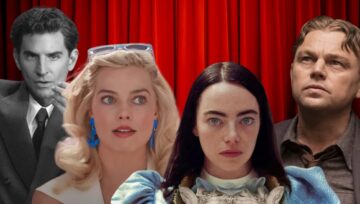 The Oscars have never been about art. As Louis B. Mayer once remarked, recalling the creation of his brainchild, “I found that the best way to handle [moviemakers] was to hang medals all over them. If I got them cups and awards, they’d kill themselves to produce what I wanted. That’s why the Academy Award was created.” Awards had the further benefit of projecting an aura of respectability on a field then associated with vaudeville and debauchery. The awards’ host, the Academy of Motion Pictures Arts and Sciences, was created for the same reason—and to handle labour disputes without unions (postmodernists are hardly the first to use language to redefine reality). Besides, an awards event hosted by an organization with a highbrow name created plenty of free publicity.
The Oscars have never been about art. As Louis B. Mayer once remarked, recalling the creation of his brainchild, “I found that the best way to handle [moviemakers] was to hang medals all over them. If I got them cups and awards, they’d kill themselves to produce what I wanted. That’s why the Academy Award was created.” Awards had the further benefit of projecting an aura of respectability on a field then associated with vaudeville and debauchery. The awards’ host, the Academy of Motion Pictures Arts and Sciences, was created for the same reason—and to handle labour disputes without unions (postmodernists are hardly the first to use language to redefine reality). Besides, an awards event hosted by an organization with a highbrow name created plenty of free publicity.
More here.
We’re entering a golden age of engineering biology
Joshua March and Kasia Gora in Noahpinion:
 The field of biology has driven remarkable advancements in medicine, agriculture, and industry over the last half-century, despite facing a significant hurdle: The immense complexity of biological systems makes them incredibly difficult to predict. This lack of predictability means that any innovation in biology requires many expensive trial-and-error experiments, inflating costs and slowing down progress in a wide range of applications, from drug discovery to biomanufacturing. But we are now at a critical inflection point in our ability to predict and engineer complex biological systems—transforming biology from a wet and messy science into an engineering discipline. This is being driven by the convergence of three major innovations: advancements in deep learning, significant cost reductions for collecting biological data through lab automation, and the precision editing of DNA with CRISPR.
The field of biology has driven remarkable advancements in medicine, agriculture, and industry over the last half-century, despite facing a significant hurdle: The immense complexity of biological systems makes them incredibly difficult to predict. This lack of predictability means that any innovation in biology requires many expensive trial-and-error experiments, inflating costs and slowing down progress in a wide range of applications, from drug discovery to biomanufacturing. But we are now at a critical inflection point in our ability to predict and engineer complex biological systems—transforming biology from a wet and messy science into an engineering discipline. This is being driven by the convergence of three major innovations: advancements in deep learning, significant cost reductions for collecting biological data through lab automation, and the precision editing of DNA with CRISPR.
More here.
Inside the Biggest Art Fraud in History
Jordan Michael Smith in Smithsonian Magazine:
 Norval Morrisseau was certain. “I did not paint the attached 23 acrylics on canvas,” he wrote in a typed letter in 2001 to his Toronto gallery representative, who had sent him color photocopies of works that had recently sold at an unrelated auction.
Norval Morrisseau was certain. “I did not paint the attached 23 acrylics on canvas,” he wrote in a typed letter in 2001 to his Toronto gallery representative, who had sent him color photocopies of works that had recently sold at an unrelated auction.
Morrisseau, then in his late 60s and suffering from Parkinson’s disease, was the most important artist in the modern history of Canada’s Indigenous peoples—the “Picasso of the North.” He had single-handedly invented the Woodlands school of art, which fused European and Indigenous traditions to create striking, vibrant images featuring thick black lines and colorful interiors of humans, animals and plants, as though they had been X-rayed and their insides were visible and filled with unusual patterns and shapes. He was one of the first Indigenous painters to garner national attention and the first to have a solo exhibition at the National Gallery of Canada in Ottawa. “Few exhibits in Canadian art history have touched off a greater immediate stir,” swooned the Canadian edition of Time magazine after Morrisseau’s sold-out 1962 debut exhibition in Toronto.
More here.
